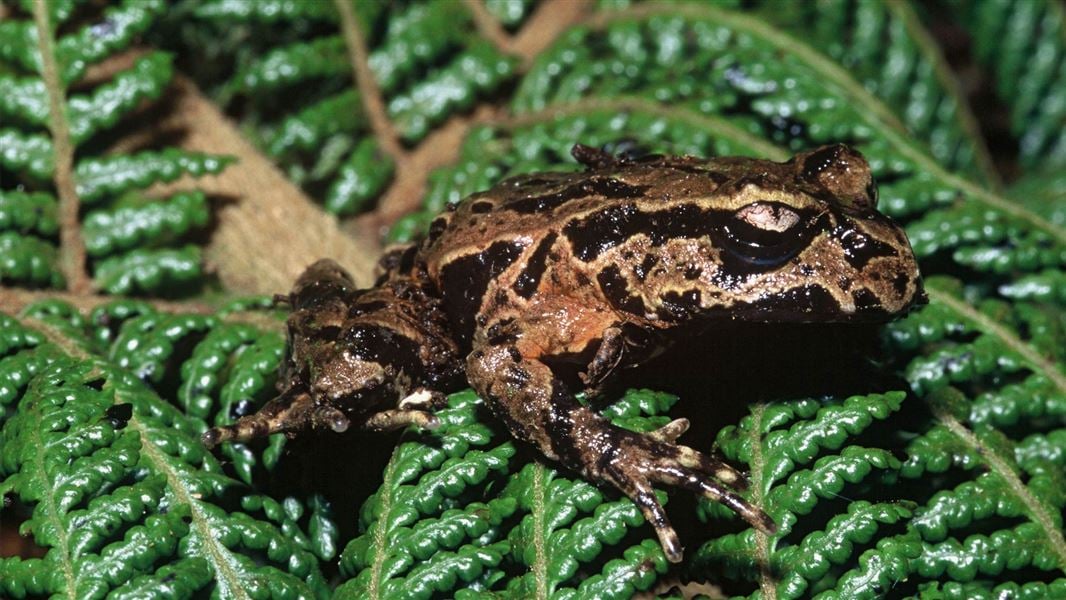
Introduction
The endangered Archey's frog is one of three remaining species of native frog, and the only terrestrial frog found on mainland New Zealand.Size: Up to 40 mm long
Colour: Mottled colours of red, green and brown
Habitat: Damp forest
Conservation status: At risk - Declining and Globally Critically Endangered
Location: Coromandel Peninsula, Whareorino Forest, Pureora
Description
Archey's frog (Leiopelma archeyi) is our smallest native frog, growing up to 37 mm long. It occupies damp forest habitats above 400 m, but has been found as low as 100-200 m above sea level in the Coromandel.
This nocturnal master of camouflage was first described as a separate species in 1942.
Mottled colours of red, green and brown make up the colour of the Archey’s skin. These patterns are so distinctive and different that DOC uses them to individually identify the frogs in its monitoring programme.
Archey’s frog is the world’s most Evolutionarily Distinct and Globally Endangered (EDGE) amphibian species.
Listen to a radio podcast: Archey's frogs thriving in the King Country
Location
Archey's frog is found in three locations:
- Coromandel Peninsula: the population declined by up to 88% in the late 1990s and early 2000s. It is in much lower abundance here, and while it appears stable at a key monitoring site, we’ve also not seen numbers bouncing back to those of the 1990’s.
- Whareorino Forest frog protection area: this population is stable or increasing at monitored sites where ongoing predator control is in place but has declined where predator control is absent.
- Pureora: a successfully translocated population, frogs were first transferred in 2006 and topped up in 2016. It is establishing well and protected by predator control.
Identifying Archey's frog
DOC uses an innovative photo stage method to identify Archey's frogs. Images taken with the photo stage are used to identify individual frogs to help us monitor and better understand ’if populations are stable, increasing or in decline and if predator control is working.
Protecting Archey's frog
Archey’s frogs are modern-day dinosaurs. Almost unchanged from their 150 million-year old fossilised relatives, these little battlers are among the world’s oldest frogs and in desperate need of help.
Archey’s frogs make a tasty meal for rats, mice, pigs, stoats, hedgehogs, possums, cats and introduced frogs. Archey’s frog are especially at risk to predation from rodents (rats and mice). Browsing animals such as goats, deer and pigs can also damage their forest habitats by eating plants and trampling undergrowth.
Efforts to protect Archey’s frog are part of DOC’s National Predator Control Programme. At Whareorino Forest, biodegradable 1080, bait stations and self-resetting traps are used to control rodents. With frogs stable or increasing at monitoring sites where pest control is undertaken, predator control has been expanded to cover the entire Archey's frog 600 hectare range in Whareorino.
We are still learning how to protect Archey’s frogs, particularly which combination of predator control will grow and recover populations in the presence of introduced predators.
Whareorino and Coromandel are the last strongholds for Archey’s frogs and the predator control at Whareorino is a nationally important native frog conservation project.
Auckland Zoo have a captive programme dedicated to developing captive breeding techniques.